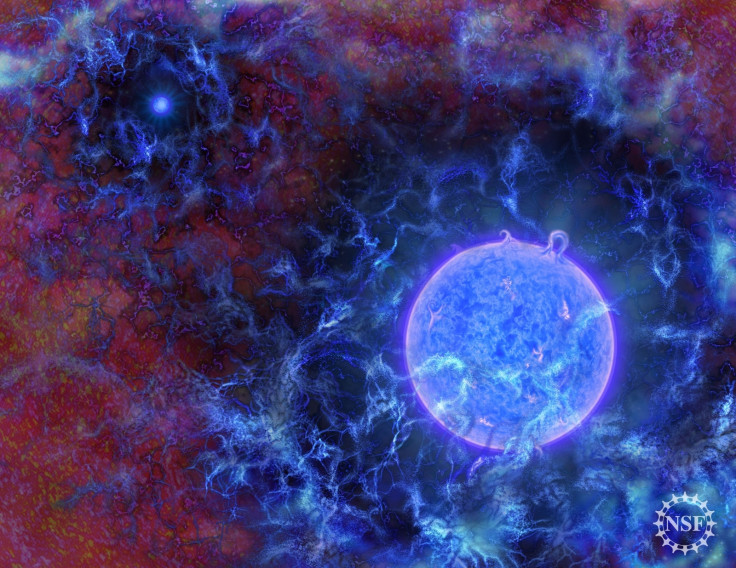Dawn of the Universe: Newly found signals from the very first stars may rewrite cosmic history
Scientists say that it took around 180 million years after the Big Bang for the very first stars to emerge in the Universe.
When did the first stars in the Universe emerge and do they still exist? Scientists peering back into time have discovered signals from the light of the very first stars in the universe. The new discovery also provides clues that could revolutionise our understanding of the mysterious dark matter particles and could rewrite cosmic history.
The new-found signals also hint that our universe was much colder than previously thought. The faint hydrogen gas signals were picked up by a table-sized radio antenna – EDGES (Experiment to Detect Global EoR Signature) – located in Australia. It represents the earliest ever evidence of hydrogen found so far.
"There is a great technical challenge to making this detection," Peter Kurczynski, program director for Advanced Technologies and Instrumentation, in the Division of Astronomical Sciences at the National Science Foundation (NSF), said in a statement. The NSF funding this project. "Sources of noise can be a thousand times brighter than the signal they are looking for. It is like being in the middle of a hurricane and trying to hear the flap of a hummingbird's wing," Kurczynski added.
Scientists say that it took around 180 million years after the Big Bang for the very first stars to emerge in the Universe. Researchers believe that the universe's early stars were likely completely devoid of light, before they began blinking, emitting ultraviolet radiation that in turn interacted with hydrogen gas in their surroundings. This interaction produced radio waves, which astronomers using radio telescopes are still able to observe.
"This is the first real signal that stars are starting to form, and starting to affect the medium around them," Alan Rogers, a co-author of the new study, which has been published in the journal Nature, who is also a scientist at MIT's Haystack Observatory, said in a statement. "What's happening in this period is that some of the radiation from the very first stars is starting to allow hydrogen to be seen. It's causing hydrogen to start absorbing the background radiation, so you start seeing it in silhouette, at particular radio frequencies."

The signals from these early stars have stretched or red-shifted, given that they have been travelling for so long in space. This redshift is what allowed astronomers to identify the signals as evidence of the earliest stars.
"The first indication of the signal emerged within weeks of turning on the instrument in 2015," Judd Bowman of Arizona State University, a coauthor of the study said, National Geographic reported. "At first we assumed it was a problem with the instrument, because it was larger than anything we expected."
The new signals indicate that the universe was likely twice as cold as previously estimated by researchers, with a temperature of around 3 kelvins, or –454 degrees Fahrenheit. Although researchers are still uncertain as to why and how the universe was cold, some scientists believe that dark matter interactions may have contributed to the temperature of the primordial universe.
Dark matter are more common than any other kind of matter found in the universe. According to another study, also published in the journal Nature, interactions with dark matter could likely explain the early universe' colder-than-expected temperature. The researchers suggested that in order to account for the extra cooling to explain the signal, the cosmic gas must have interacted with something even colder. The only matter known to have been cooler than this gas is dark matter.
"It would be extremely exciting if this was a signal of dark matter, and it's not impossible," said Tracy Slatyer of MIT, National Geographic reported.
The new discovery, if confirmed, represents one of the most significant scientific findings in recent years and could revolutionise our understanding of the universe.
"These results require some changes in our current understanding of the early evolution of the universe," says Colin Lonsdale, director of Haystack Observatory. "It would affect cosmological models and require theorists to put their thinking caps back on to figure out how that would happen."
"Basically, it's worth two Nobel Prizes if the detection is correct," Harvard astrophysicist Avi Loeb, who was not involved in this research, told Gizmodo. "One for the first detection of hydrogen from when the universe was 100 million years old, and the second for detecting new physics."






















